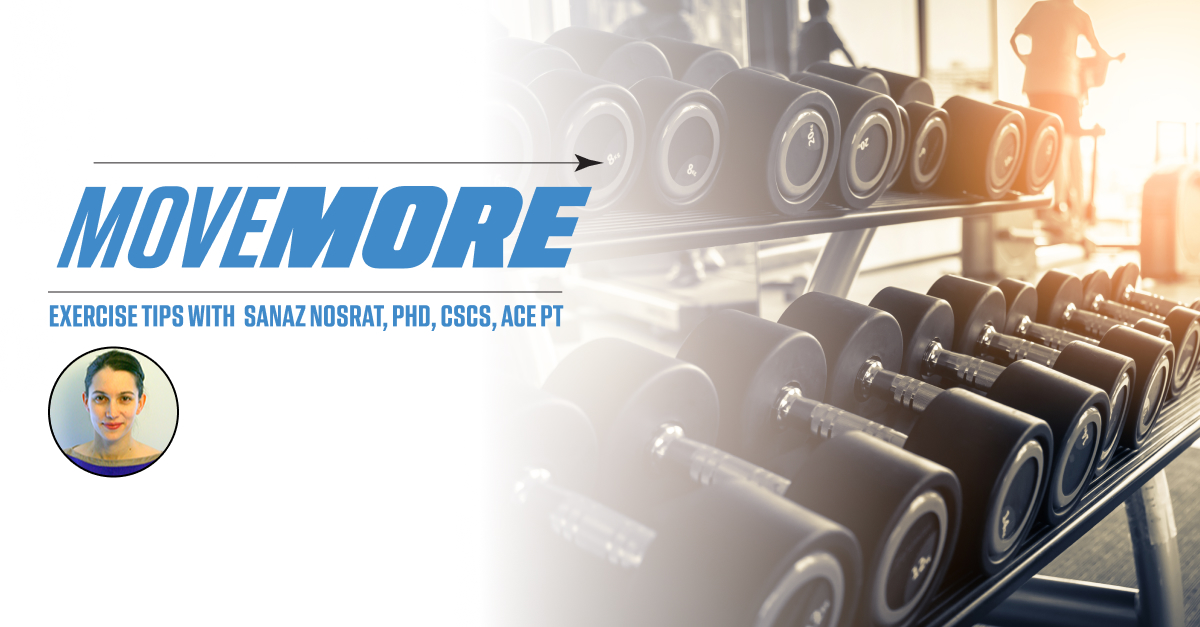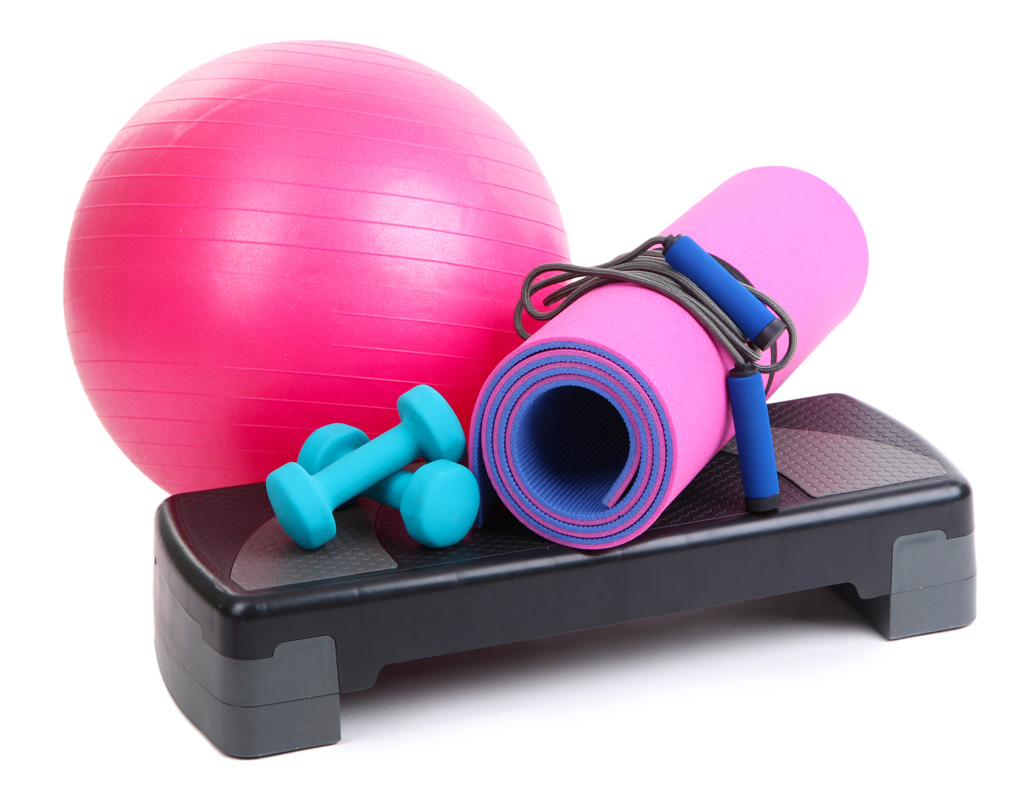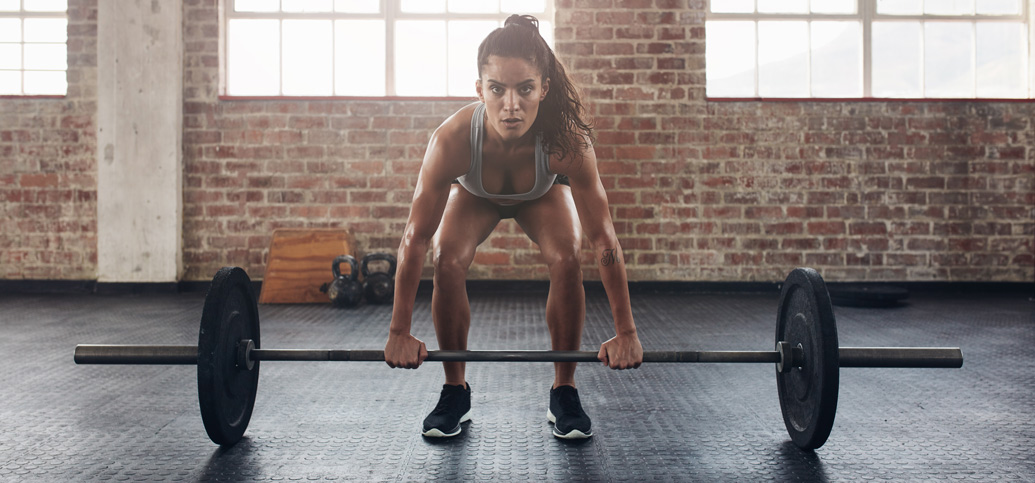
Welcome back to my blog. I hope you’ve read my previous blog post on how to increase your daily physical activity and how to design an aerobic exercise program. In the previous post, I talked about how to design a new aerobic exercise program for yourself. This time, I’m going to discuss the benefits of adding resistance exercise to your exercise routine. I will explain some of the benefits of resistance exercise and will give you some tips on how to design and stick to your program.
*Just remember that before you start any exercise program, it’s always important to ask your healthcare provider to make sure you are medically cleared to exercise.
What is resistance exercise?

Resistance exercise, also called weight lifting or strength training is a mode of exercise in which you will use a form of resistance (body weight, elastic bands, weights) to build strength and increase muscle mass.
Benefits:
Resistance exercise is beneficial for many reasons. As we age, we lose muscle mass and bone density and research has shown that resistance exercise can help prevent the loss of both muscle and bone.
Additionally, since muscle tissue is sensitive to insulin, research also shows that by building more muscle mass and increasing insulin sensitivity, most individuals with diabetes can better manage their blood glucose.
There is also evidence that indicates adding resistance exercise and improving muscular health can be beneficial in helping us maintain independence in performing activities of daily living, preventing the risk of falls and injuries, and the risk of other age-related chronic conditions.
Programming:
Starting a resistance exercise program on your own can seem challenging, but by being aware of key factors and knowing how to address them, you can set yourself up for success. Here are important things to consider and how to approach them when beginning your resistance exercise program:
- Mode: You can choose between free weights (such as dumbbells and barbells), weight machines, resistance bands, or simply your bodyweight. It’s best to start with weight machines if you have access to the gym. Resistance bands and bodyweight exercises are also excellent options to start with and learn the movements especially if you don’t want to go to a gym.
- Intensity: For adjusting intensity, you need to determine your movements, weights, sets, repetitions, and rest period:
-
Movement selection: It’s always best to choose movements that involve more than one joint such as squat, deadlift, push up, row, and shoulder press. There are lots of variations to these exercises. For the start, let’s stay away from free weights (dumbbells and barbells) and instead do bodyweights (meaning use your own body weight as resistance), resistance bands, or weight machines.For bodyweight movements like squats and push-ups, your body weight provides the resistance. Focus on proper form and technique before adding external weight or resistance. If using resistance bands, choose bands with a level of resistance to match your current strength level. Start with a lighter band and gradually progress to heavier ones as you get stronger. If using weight machines, pay attention to how to load, unload, and adjust the machine for optimal body positioning.
-
Weight selection, sets, repetitions, and rest period: You can load your movements by adding weights, choosing different body positions, or using different bands. The more you load the movement (meaning the more you add resistance), the lower the number of repetitions. And you should always feel challenged towards the end of the repetitions in each set. For example when doing 3 sets of 8-10 repetitions, when you get to the 7th or 8th repetition in each set, you should feel that it gets noticeably more challenging. That’s how you know you have chosen the right amount of weights!
If it’s the first time doing resistance exercise, start with bodyweight movements, and bands and aim at doing 3 sets of 8-10 repetitions regardless of how hard it feels. As you get better at doing the movements and learn the technique, you can start using machines, free weights, or heavier bands and follow the rule above to choose the right amount of weights. When choosing machines and free weights, you can start with 2 sets of 10-12 repetitions and work your way up to 3 sets of 10-12 repetitions or 3 sets of 8-10 repetitions. Remember the lower the number of repetitions, the heavier the weights.
Also, you need to rest for 30 to 90 seconds between each set.
-
- Frequency: Start off with 1-2 times per week and aim at increasing it to 3 times per week.
- Duration: Always aim at completing about 8-10 exercises (3 sets of 8-10 reps) that cover major muscle groups in each session.
- Progression and variation:
- Progression and variations are two key elements to help you get stronger, build muscle mass, and help keep you motivated. You can do this by:
-
Changing the order of exercises you do
-
Doing different exercise variations (for example, if you’ve been doing barbell back squats, switch to front squats)
-
Changing the number of sets, repetitions, and weights
-
Choosing between machines, free weights, bodyweights, or resistance bands
-
- Progression and variations are two key elements to help you get stronger, build muscle mass, and help keep you motivated. You can do this by:
-
Exercise form and technique: Exercise form is crucial when doing resistance exercise. That’s why it’s recommended that beginners start with bodyweight exercises and resistance bands to learn and master movements first. Multi-joint movements such as squat, deadlift, shoulder press, chest press, and row all need practice. Never rush to begin loading your movements. If you are not sure of your technique, join a local gym and ask for a free personal training session. You can also use online resources such as this exercise library from American Council on Exercise (ACE).
Best Practices
Adherence is crucial to the success of any exercise program. Here are some valuable tips to help you stick to your new resistance exercise routine:

-
Pay attention to your form. Proper form and technique are important to avoid injury. One of the reasons people drop out of exercise programs is experiencing pain or injuries. So, make sure that you learn the proper forms and techniques with minimal loads before loading your movements. You can watch yourself in the mirror or even film yourself to see your form later.
-
Make it fun: Choose exercises and variations that you enjoy. If you like what you’re doing, you’re more likely to stick with it.
-
Prevent excessive muscle soreness. Pay attention to how your body responds after each workout. Some soreness is normal, especially when starting a new program or increasing intensity. However, excessive soreness that interferes with daily activities is a sign that you may have progressed too quickly. And let’s face it, excessive muscle soreness after exercise is not fun! You can avoid this by progressing slowly. For example, if your goal is to do 3 sets of 8-10 repetitions, increase the weights only when you can complete 3 sets of 10 repetitions without feeling excessive fatigue or soreness the day after.
-
Allow for recovery: Give your muscles time to recover between workouts. Adequate rest is essential for muscle repair and growth, as well as reducing soreness.
-
Be patient and realistic: Understand that progress takes time. Avoid comparing yourself to others and focus on your own journey.
-
Reward yourself: Celebrate your achievements, both big and small. Rewards can help reinforce positive behavior.
-
Overcome barriers: Identify potential obstacles and develop strategies to overcome them. Whether it’s lack of time, motivation, or resources, having a plan in place can help.
-
Monitor your blood glucose. Remember to monitor your blood glucose before, during (if possible), and after an exercise session to learn how your body reacts to your new exercise routine. Take a look at this resource from the American Diabetes Association (ADA) and see how you can get started safely with exercise while monitoring your blood glucose.
One way to keep track of your blood glucose is to download and use the Glooko app. You can also connect and sync your activity tracker app, including iHealth, Fitbit, or Strava, to Glooko. This way, you can see both your blood glucose and activity data in one place. This way, you can always review your own data and determine what works best for you.
Now, it’s time for you to start creating your resistance exercise program using the guidance above. I hope this information can help you in your journey to lead a healthier and happier lifestyle.
Yours in Health and Fitness,
Sanaz Nosrat, PhD, CSCS, ACE PT
MKT-0493 01

 Germany
Germany  Spain
Spain  France
France